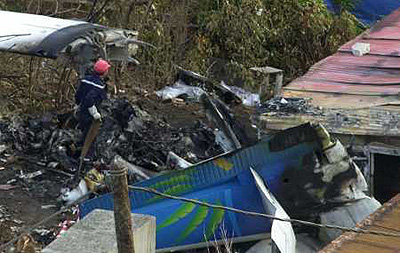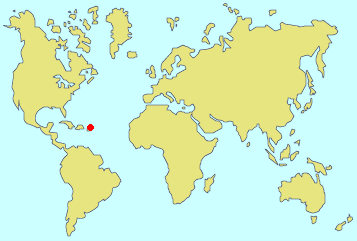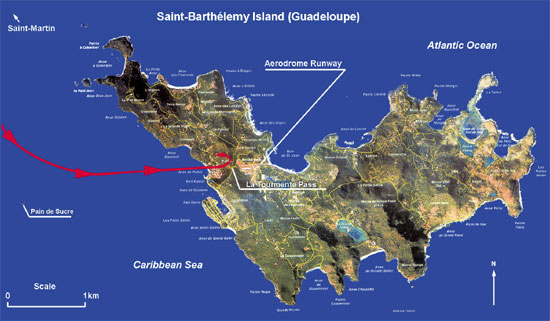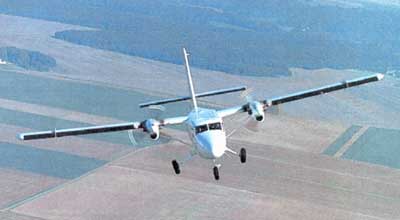Caraïbes Air Transport DHC-6 Twin Otter 300 plane crash
Saint-Barthélémy

Updated on
 The Twin Otter plane was on a 10-minute inter island flight between St. Maarten, Dutch/French Antilles, and Saint-Barthélémy, French Antilles, and approached Saint-Barthélémy from the West for a visual approach and landing on runway 10. While on finals over the 'Col de la Tourmente', the aircraft was seen making a sharp turn to the left. The Twin Otter struck a house on the 'Col de la Tourmente' and caught fire. The 17 passengers and 2 crewmembers were killed. A man on the ground was also killed and his wife was injured. A house was destroyed.
The Twin Otter plane was on a 10-minute inter island flight between St. Maarten, Dutch/French Antilles, and Saint-Barthélémy, French Antilles, and approached Saint-Barthélémy from the West for a visual approach and landing on runway 10. While on finals over the 'Col de la Tourmente', the aircraft was seen making a sharp turn to the left. The Twin Otter struck a house on the 'Col de la Tourmente' and caught fire. The 17 passengers and 2 crewmembers were killed. A man on the ground was also killed and his wife was injured. A house was destroyed.
The most probable hypothesis is that the pilot would have selected the reverse beta range for the propellers with the intention of losing energy to correct the airspeed, regain the descent path or shorten the landing as much as possible. In fact, the propeller then acts as a powerful brake.
It is possible that an asymmetry developed at that moment, though it would have been of relatively low amplitude, given the low thrust setting on approach, and could have been detected and likely quickly countered. However, following entry into reverse beta range, the aircraft may have developed undesirable behavior (stall warning, buffeting, etc.) or have reached the target airspeed, which would have been the desired result. In either case, it is necessary at that moment to de-select reverse beta range. Then the pilot would have pushed the levers energetically back to their normal use range by increasing the thrust, which would explain the change in the engine noise. Asymmetry in the power levers movement, or in the operation of the propeller mechanism, or even in the position of the propeller levers, would then have led to asymmetry between the engines, to an extent that would have led to a violent yaw movement, inducing a sharp roll to the left, possibly associated with a stall of the left wing, then a dive. The pilot would not have been able to regain control of the aircraft, which would have been both too slow and too near the ground at that moment.

Difficulty of the approach to runway 10
The turbulence upstream of the La Tourmente pass can affect flying; it therefore requires vigilance and permanent attention during approaches to runway 10. Pilots are conscious of this phenomenon but cannot completely avoid it. Thus, some adopt a track with which they are more at ease, given their habits, feelings, skills and their knowledge of the aircraft; some offset to the right or to the left, while others prefer to start high relative to the normal approach path.There is an additional difficulty. As soon as they have gone over the pass, pilots must adopt a nose down attitude, which is not natural so near to the ground, in order to guarantee as short a landing as possible, taking into account the infrastructure. The unease exhibited by some pilots may also occasionally lead to a runway overrun.
Conclusion
The investigations have established that the accident appears to result from the Captain's use of the propellers in the reverse beta range, to improve control of his track on short final. A strong thrust asymmetry at the moment when coming out of the reverse beta range would have caused the loss of yaw control, then roll control of the aircraft.The investigation could not exclude three other hypotheses which can nevertheless be classified as quite unlikely:
- A loss of control during a go-around.
- A loss of control due to a stall.
- A loss of control due to sudden incapacitation of one of the pilots.
The low height at which the loss of control occurred was an aggravating factor.



